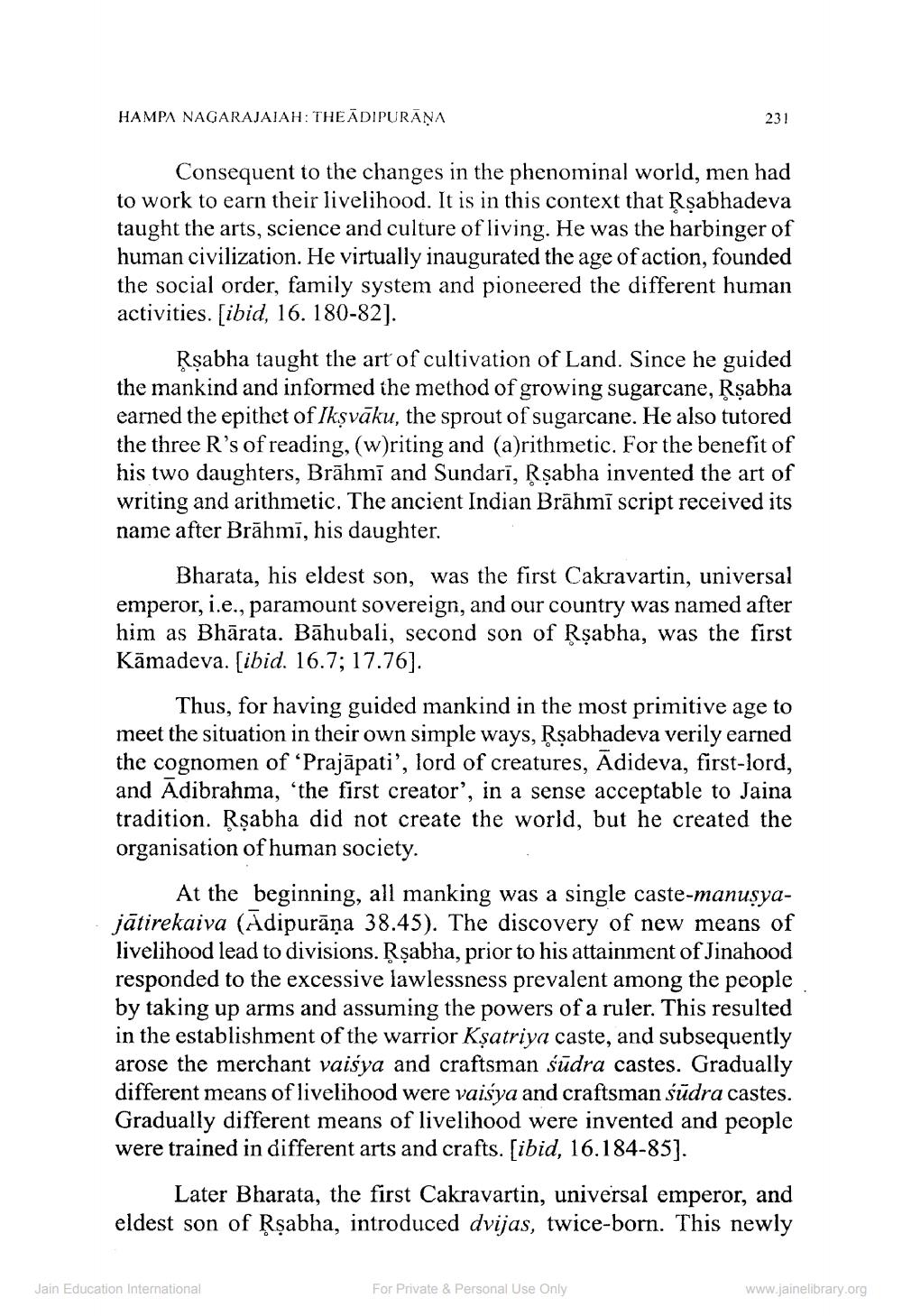________________
HAMPA NAGARAJAIAH: THE ADIPURĀŅA
Consequent to the changes in the phenominal world, men had to work to earn their livelihood. It is in this context that Rṣabhadeva taught the arts, science and culture of living. He was the harbinger of human civilization. He virtually inaugurated the age of action, founded the social order, family system and pioneered the different human activities. [ibid, 16. 180-82].
231
Rṣabha taught the art of cultivation of Land. Since he guided the mankind and informed the method of growing sugarcane, Rṣabha earned the epithet of Ikṣvāku, the sprout of sugarcane. He also tutored the three R's of reading, (w)riting and (a)rithmetic. For the benefit of his two daughters, Brahmi and Sundari, Rṣabha invented the art of writing and arithmetic. The ancient Indian Brāhmī script received its name after Brahmī, his daughter.
Bharata, his eldest son, was the first Cakravartin, universal emperor, i.e., paramount sovereign, and our country was named after him as Bhārata. Bahubali, second son of Rṣabha, was the first Kamadeva. [ibid. 16.7; 17.76].
Thus, for having guided mankind in the most primitive age to meet the situation in their own simple ways, Rṣabhadeva verily earned the cognomen of 'Prajapati', lord of creatures, Adideva, first-lord, and Adibrahma, 'the first creator', in a sense acceptable to Jaina tradition. Rṣabha did not create the world, but he created the organisation of human society.
At the beginning, all manking was a single caste-manusyajātirekaiva (Adipurāņa 38.45). The discovery of new means of livelihood lead to divisions. Rṣabha, prior to his attainment of Jinahood responded to the excessive lawlessness prevalent among the people by taking up arms and assuming the powers of a ruler. This resulted in the establishment of the warrior Kṣatriya caste, and subsequently arose the merchant vaisya and craftsman sudra castes. Gradually different means of livelihood were vaisya and craftsman sudra castes. Gradually different means of livelihood were invented and people were trained in different arts and crafts. [ibid, 16.184-85].
Later Bharata, the first Cakravartin, universal emperor, and eldest son of Rṣabha, introduced dvijas, twice-born. This newly
Jain Education International
For Private & Personal Use Only
www.jainelibrary.org




